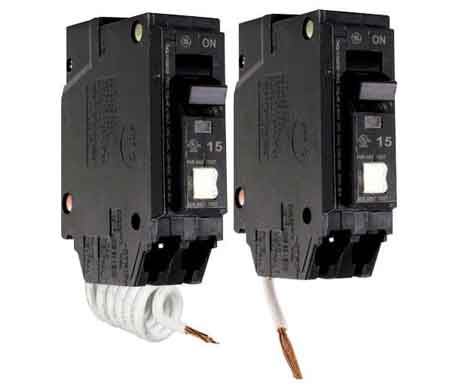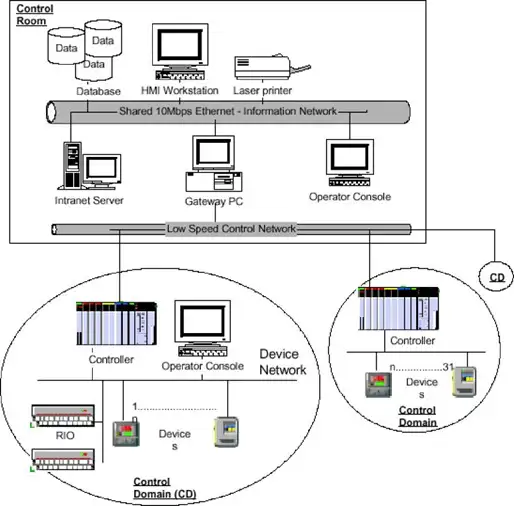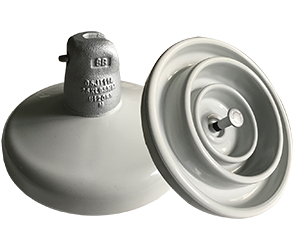AFCI Protection Explained

Substation Relay Protection Training
Our customized live online or in‑person group training can be delivered to your staff at your location.

- Live Online
- 12 hours Instructor-led
- Group Training Available
Download Our OSHA 4474 Fact Sheet – Establishing Boundaries Around Arc Flash Hazards

- Understand the difference between arc flash and electric shock boundaries
- Learn who may cross each boundary and under what conditions
- Apply voltage-based rules for safer approach distances
AFCI protection detects and interrupts dangerous arc faults in electrical circuits, reducing the risk of fire. Mandated by modern codes, it improves safety in bedrooms, living areas, and other parts of residential and commercial buildings.
What is AFCI Protection?
An Arc Fault Circuit Interrupter (AFCI) is a safety device designed to recognize electrical arcing conditions and stop them before they cause a fire. Unlike standard breakers that only respond to overloads or short circuits, an AFCI identifies the unique electrical signature of an arc fault and disconnects power immediately.
✅ Stops electrical fires caused by arc faults
✅ Required by the NEC for many living-area circuits
✅ Protects hidden wiring, receptacles, and connected devices
Basic Protection Relay Training
Request a Free Training Quotation
Why Arc Faults Are Dangerous
An arc fault is an unintended discharge of electricity that occurs when conductors are damaged, loose, or deteriorated. These small sparks may not trip a conventional breaker but can reach thousands of degrees, igniting insulation, wood framing, or nearby materials. Common causes include:
-
Wires pinched behind furniture or punctured by nails and screws
-
Aging or cracked insulation on cords and extension cables
-
Loose connections inside outlets, switches, or panels
-
Repeated flexing of cords on lamps, appliances, and electronics
Because these faults often begin inside walls or hidden spaces, they can go undetected until fire breaks out. AFCIs provide the proactive safeguard needed to prevent these events. To understand how this type of circuit interrupter compares with other safety technologies, see our complete overview on arc fault circuit interrupter protection.
How AFCI Devices Work
AFCI Breakers
Installed in the service panel, these replace standard circuit breakers. They monitor the entire branch circuit for arcing signatures and shut it down instantly when hazardous conditions are detected. AFCI breakers are just one of many circuit protection devices used to enhance safety and prevent electrical fires in modern installations.
FREE EF Electrical Training Catalog
Download our FREE Electrical Training Catalog and explore a full range of expert-led electrical training courses.

- Live online and in-person courses available
- Real-time instruction with Q&A from industry experts
- Flexible scheduling for your convenience
AFCI Receptacles
Installed at the outlet level, these provide localized protection. They are especially valuable in retrofit projects or in locations where breaker replacement is not practical.
Branch/Feeder vs. Combination AFCIs
-
Branch/Feeder AFCIs: Detect arcs in permanent wiring between the panel and outlets. They cover both series arcs (from broken or loose conductors) and parallel arcs (from insulation damage or contact between conductors).
-
Combination AFCIs: Offer expanded coverage by detecting dangerous discharges in both fixed wiring and connected devices like lamps, extension cords, or appliances. These are the standard for new construction and renovations.
AFCI vs GFCI vs Standard Breaker – Key Differences
| Feature / Function | AFCI (Arc Fault Circuit Interrupter) | GFCI (Ground Fault Circuit Interrupter) | Standard Circuit Breaker |
|---|---|---|---|
| Primary Protection Type | Arc faults (series and parallel) | Ground faults (leakage to ground) | Overcurrent and short circuits |
| Fire Prevention | ✅ Prevents fires caused by arcing faults | ❌ Not designed to prevent arc-related fires | ❌ Limited fire prevention |
| Shock Protection | ❌ Does not protect against electric shock | ✅ Prevents shock from ground faults | ❌ No shock protection |
| Code Requirement Locations | Bedrooms, living areas, kitchens, laundry rooms | Kitchens, bathrooms, garages, outdoor outlets | All standard branch circuits |
| Detection Method | Monitors waveform patterns for arcing signatures | Detects imbalance between hot and neutral wires | Monitors current for overloads |
| Reset After Trip | Manual reset required | Manual reset required | Manual reset required |
| Combination Devices Available | ✅ Yes (Dual Function AFCI/GFCI) | ✅ Yes (Dual Function AFCI/GFCI) | ❌ Not applicable |
You can explore the differences between arc fault and ground fault protection in our detailed guide on GFCI protection and how it complements AFCI systems.
For a broader look at system-wide safety strategies, our electrical protection channel covers a wide range of topics related to fault detection and circuit control.
NEC Code Requirements for AFCI Protection
The National Electrical Code (NEC) requires AFCI protection for 120-volt, single-phase, 15- and 20-amp branch circuits in many areas of a dwelling, including:
-
Bedrooms and living rooms
-
Dining rooms and parlors
-
Sunrooms and recreation rooms
-
Dens, libraries, and closets
-
Hallways and laundry areas
These requirements reflect the high risk of wiring damage from furniture movement, plugged-in devices, and everyday household activity.
Series vs. Parallel Arc Faults
-
Series Arc Faults: Occur when a single conductor is damaged, creating a gap through which current can jump. Often caused by loose terminations or broken wires.
-
Parallel Arc Faults: Occur when two conductors (hot-to-neutral or hot-to-ground) come into contact due to damaged insulation or physical stress.
AFCIs are engineered to detect both, providing broad fire-prevention coverage.
Why AFCI Protection Matters
Electrical fires remain one of the leading causes of home damage and fatalities. By addressing hidden dangers that traditional breakers cannot detect, AFCIs represent a major advancement in electrical safety. Their ability to sense early warning signs and disconnect the circuit makes them indispensable in modern installations. Learn how different circuit breaker types function and why they are a required evolution in overcurrent and arc fault safety.
Frequently Asked Questions
Do AFCIs replace regular circuit breakers?
Yes. AFCI breakers are installed in place of standard breakers and provide both overcurrent protection and arc fault detection.
Are AFCIs required in older homes?
Not always, but many jurisdictions recommend adding them during upgrades. Some local codes mandate AFCI retrofitting.
Can AFCIs nuisance trip?
Early models sometimes did, but modern AFCIs include advanced filtering to reduce false trips from appliances like treadmills or vacuums.
How do you test an AFCI?
Most devices include a “Test” button that should be pressed monthly to confirm functionality.
Are AFCIs expensive to install?
They cost more than standard breakers, but the added fire prevention and code compliance outweigh the upfront investment.
Related Pages







